At Home in the World: The Archive of Navina Sundaram
In May 1989, India and Nepal were mired in diplomatic debacles. India, uneasy with Nepal’s increasing reliance on China, retaliated with an economic blockade. Two months prior, India had declared that the treaties on trade and transit between the two countries had expired and refused renewal, proceeding to block entry-points on their shared border. As a consequence, landlocked Nepal, which depended on India for transit, trade, and essential goods such as cooking oil, salt, and petroleum products, was flung into a period of economic adversity.
An Indian woman, in an immaculately draped saree, stands against the world map in a German television studio. Manifest in her inscrutable delivery is the mainstay of a news presenter’s vocation—her deadpan demeanour betrays nothing, least of all that she is presenting a satirical news segment. The segment titled “Reading service Nepal” is merely one among several archival materials made available and accessible to the public through The Fifth Wall, a platform archiving the life and career of Navina Sundaram. Conceptualised by Merle Kröger and Mareike Bernien in collaboration with Sundaram under the framework of Archive Außer Sich, The Fifth Wall was publicly launched on 1 April 2023, at the Goethe-Institut New Delhi, the first in a series of events across the Indian cities of Mumbai, Pune and Bengaluru.
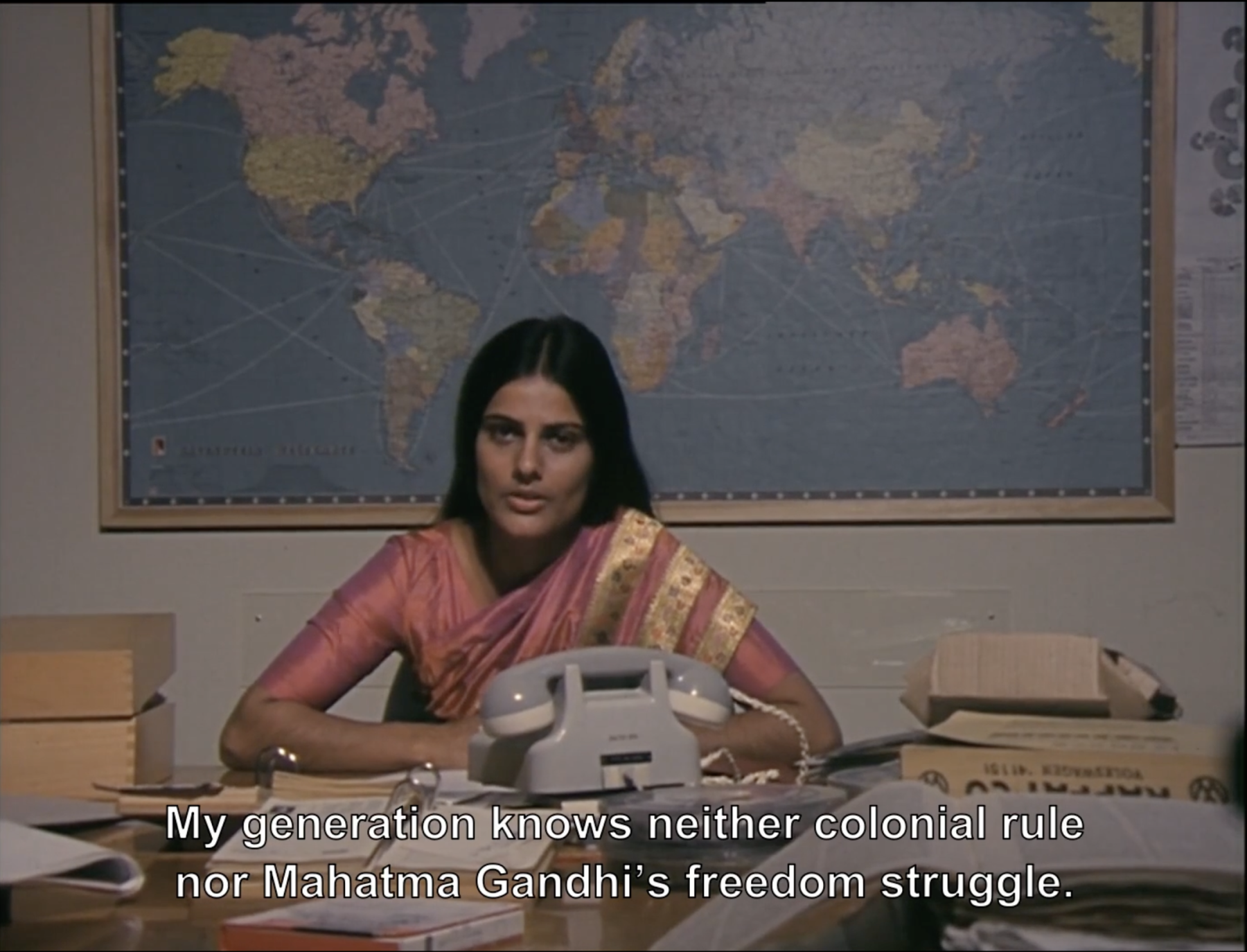
So long as there are tears, 1972
Inaugurated amidst spirited discussions over the subjects of decolonisation, public access and archival imaginaries, The Fifth Wall is an exceptional assemblage. In her introduction to the project, Merle Kröger expanded on how the considerations of the archive were interlaced with those of its home, the digital interface. Through meticulous curation and attentive annotation, the archive collates artefacts of Sundaram’s public career—films, programmes, panels, and interviews, along with her letters, reflections, and commentary by her friends and colleagues. Illustrating fragments from her path breaking career as a woman of colour presenting on the German news, the archive inevitably frames key moments in the vexed fates of postcolonial states, as well as of a Europe weighed down by the Cold War.
At the time of Nepal’s blockade in 1989, Sundaram was a presenter for the German public television broadcaster Norddeutscher Rundfunk (NDR). Presenting a minute-long segment on the weekly satire show Extra Drei, Sundaram read out a press release by the Indian Foreign Ministry, rubbishing the charges of a blockade by listing out items that were imported by Nepal between March and May of 1989. The sequence opens with the camera locating Nepal on the world map, zooming out to reveal the immense scale of its neighbour and aggressor, India. Sundaram stands right next to India, reading out the press release. It details items of luxury consumption such as “Cosmetics worth a little less than 225,000 Rupees, Refrigerators: 460,000 Rupees, Televisions: 610,000 Rupees, Air conditioners: 900,000 Rupees, Cardamom: 10.2 million Rupees, Scotch Whiskey: 490,000 Rupees…”
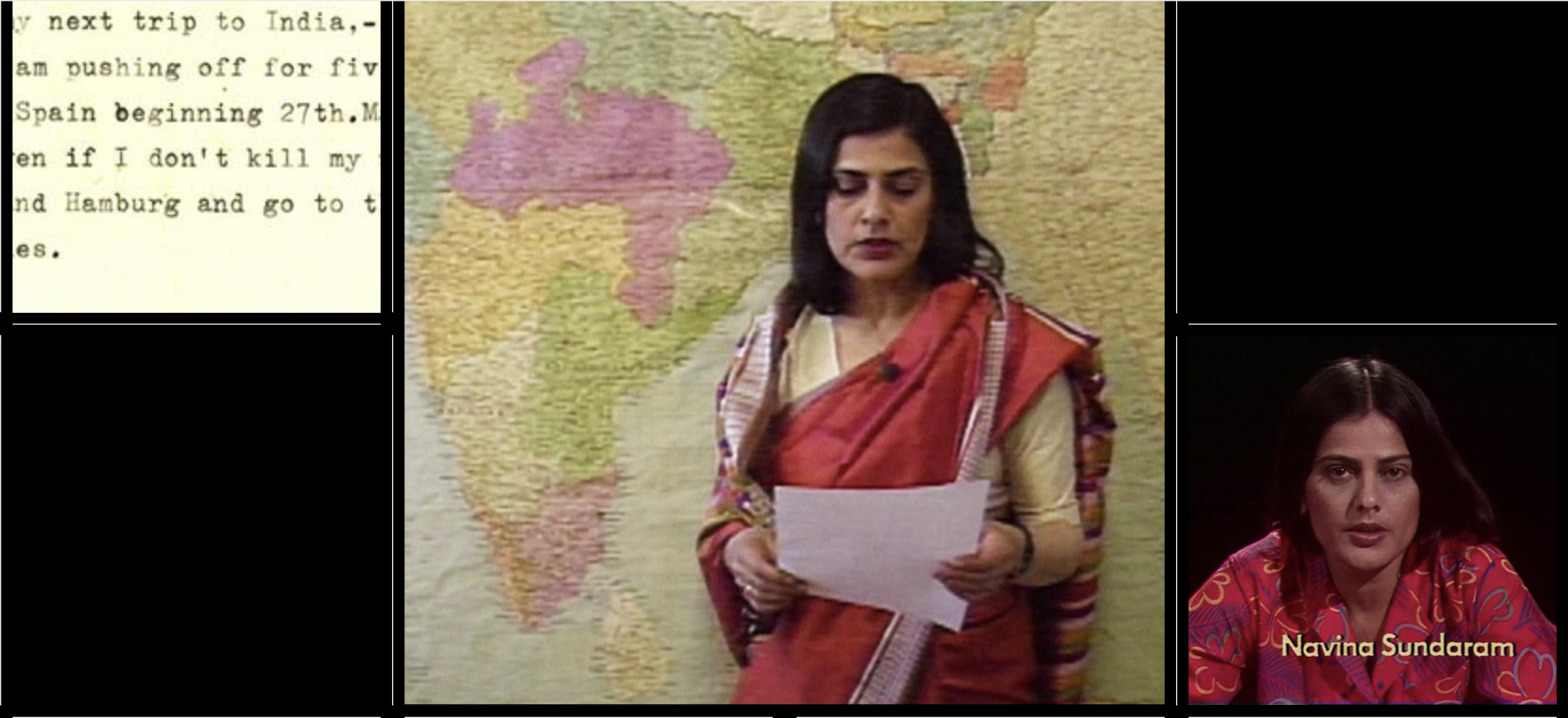
Screenshot from Reading Service Nepal
This short snippet exemplifies Sundaram’s quick-witted composure and her ability to illuminate the machinations of political conceit through what appears to be an absurd turf war between two South Asian states. One immediately recognises the apparent connivance of the press release through its insistence on not blocking Nepal. By sampling a list of luxury imports, it completely bypasses the crisis of essential goods that the country was facing. In repeating precisely the terms of the document provided by Indian representatives, Sundaram’s piece makes legible the coercive hauteur of the Indian state.
Sundaram grew up in New Delhi and studied English Literature at the University of Delhi. Following this, she moved to Hamburg, Germany, in 1964 for a two-year apprenticeship at NDR. She trained across departments at NDR, working in varying capacities as a reporter, presenter, editor, foreign correspondent and filmmaker with the broadcasting service for close to three-and-a-half decades. As the first non-German to present on German news broadcast services, Sundaram occupied a unique position. As an Indian woman reporting on domestic and global politics, she offered a singular vantage point, which she distilled astutely as “an outsider’s inside view or an insider’s outside view.”
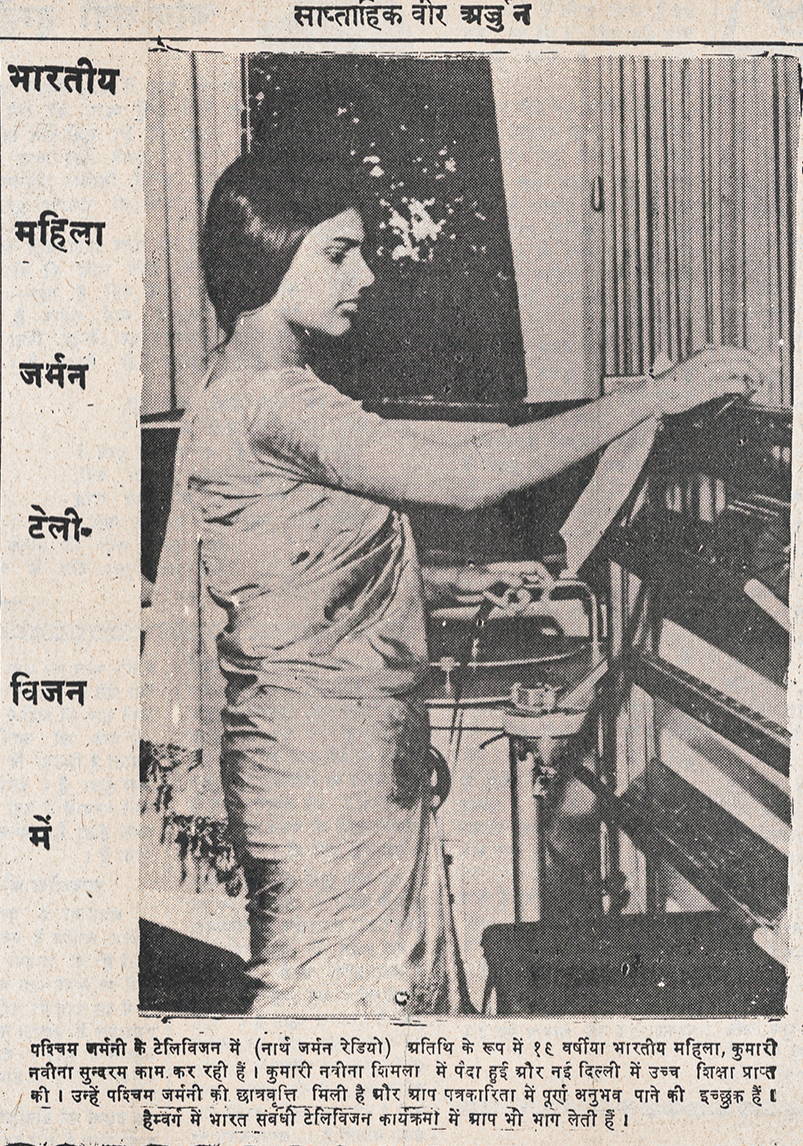
Navina Sundaram, Hindi Press, 1964
Travelling alongside Sundaram’s lens, we see immense political transformation through her perspicacious vision. She follows the trail of decolonisation and Third-Worldist nationalism, covering the fates of Bangladesh following the Liberation War, Guinea-Bissau’s exceptional legacy of anti-colonial resistance, Western Sahara caught amidst internecine wars after the departure of its Spanish colonisers, and the grimmer realities of an India commemorating twenty-five years of independence. As a narrator of these troubled histories, Sundaram constellates the optimism of the Third-Worldist moment through archival and documentary footage, bound together by nimble editing and arch commentary. At once steeped in the euphoric promise of the Nehruvian age and burnished by its meagre mileage, Sundaram’s films broadcast the shifting trend towards cultural conservatism, ethno-nationalism and majoritarianism in these countries—demonstrated at its worst in the demolition of the Babri Masjid in Ayodhya in 1992.
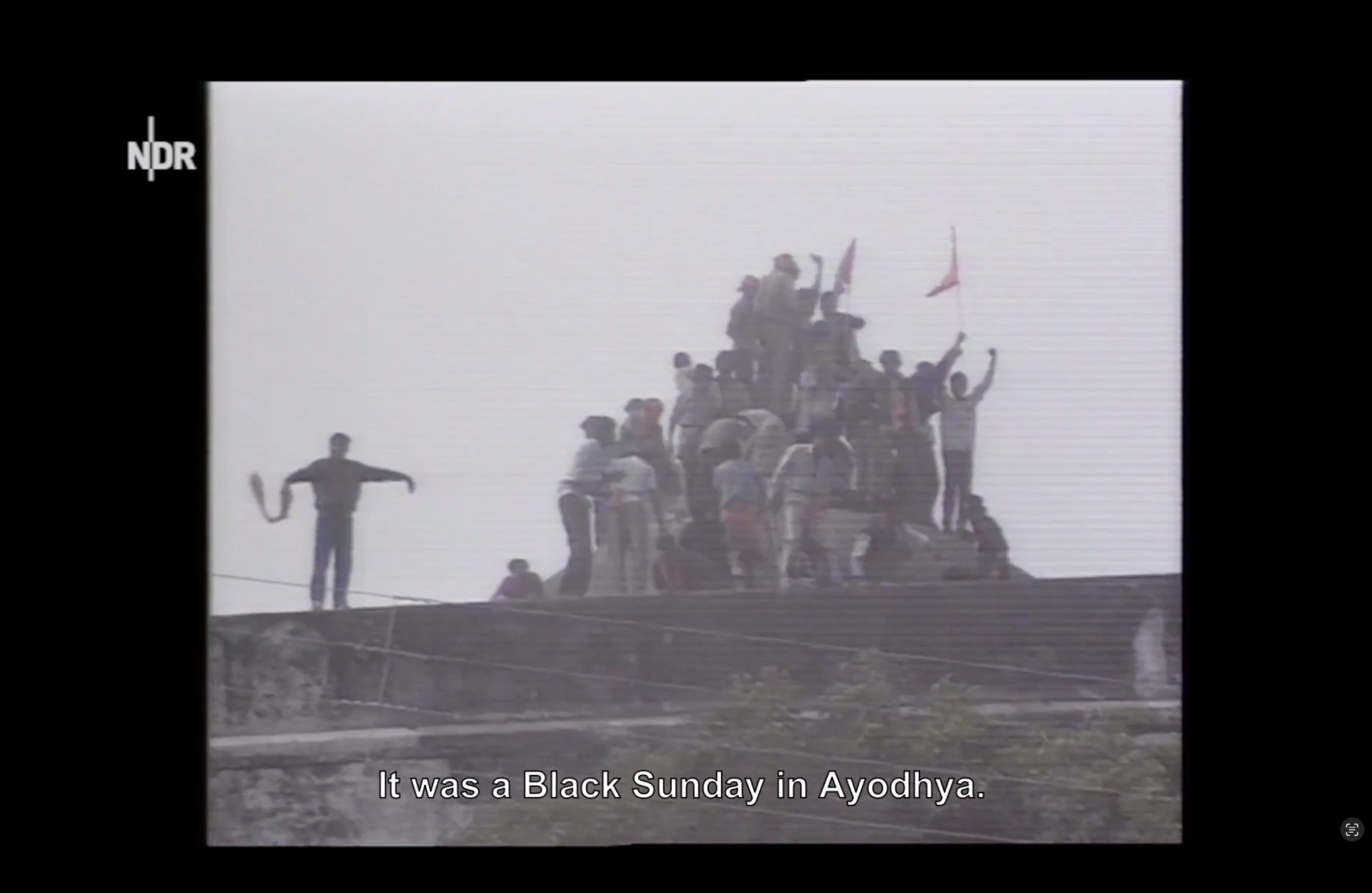
Unrest in India, 1992
In her “domestic” coverage, Sundaram’s work significantly attests to racial tensions in Germany, presenting the precarious lives of refugees and immigrants. She could cut through the alarmist and racist anti-immigration rhetoric in Germany with the same precision and command as she assembled traces of lost lives and promises in the “Third World.” At home in the world, Sundaram’s work pierces through the escalating enclosures of modern nations.
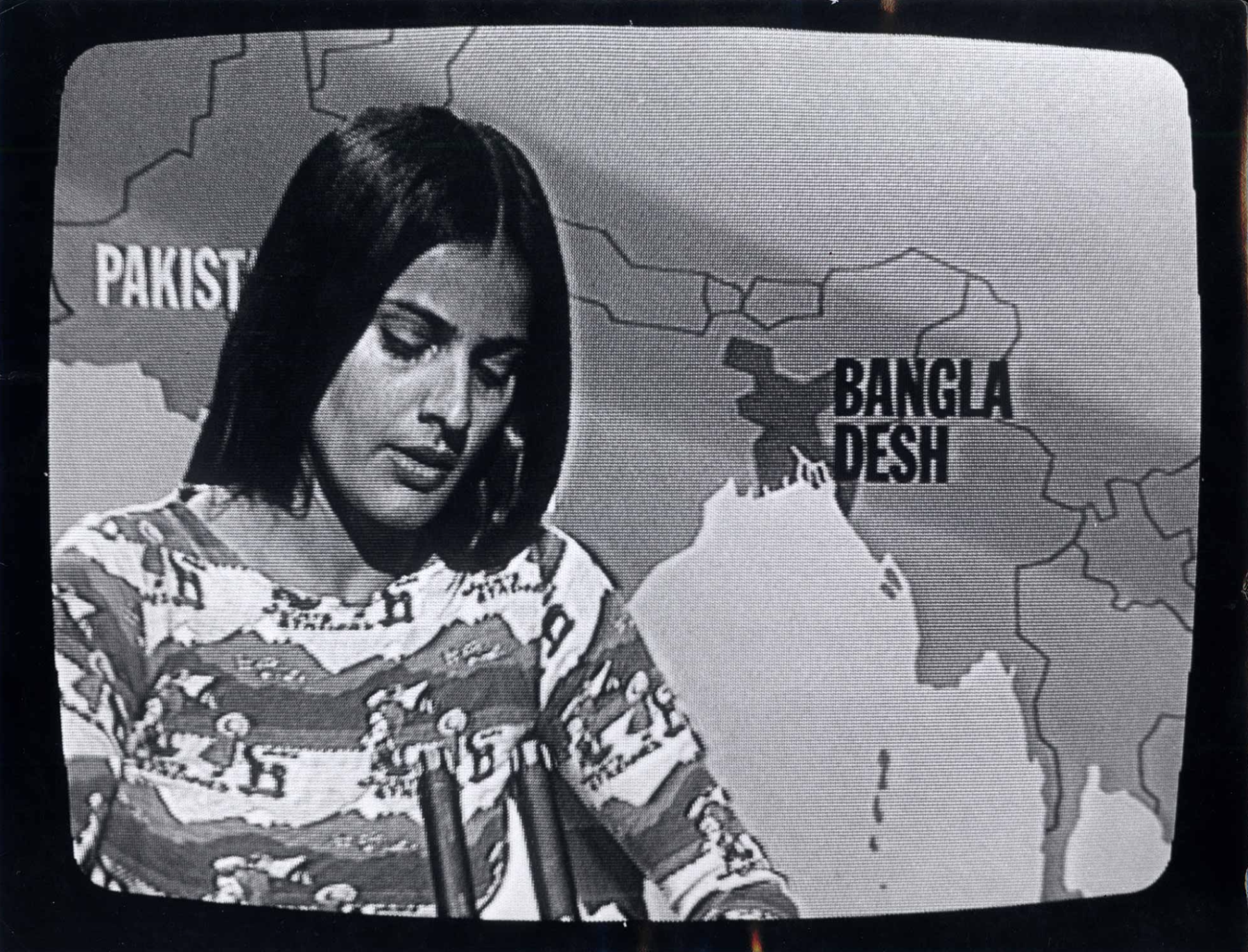
Navina Sundaram, Weltspiegel, 1975
To know more about The Fifth Wall, read Ankan Kazi’s piece on the initial launch of a few films from the archive in 2022, and his coverage of a talk detailing archiving collectives and practices. Watch “Reading service Nepal” on the Fifth Wall archive.
All images courtesy of The Fifth Wall, Merle Kröger and the Sher-Gil Sundaram Arts Foundation.




